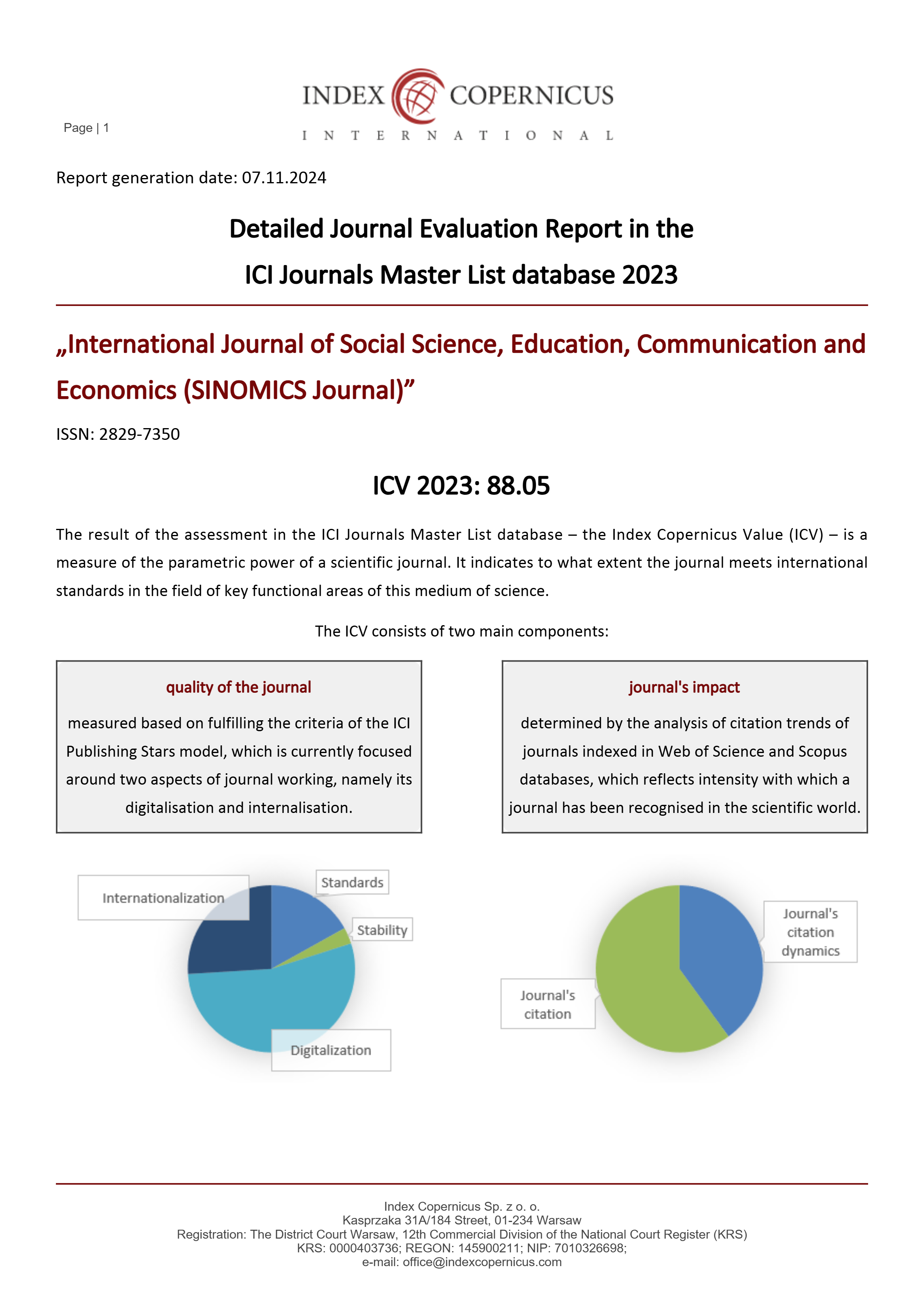Detection of Cash Flow Shenanigans in The Financial Reports of PT Waskita Karya Tbk
Main Article Content
Natalis Christian
Pina
Christian
Versia Silvana
To better understand if fraud occurs in the financial reports generated by PT Waskita Karya Tbk in 2020–2022, the research problem is linked to the Cash Flow Shenanigans hypothesis. Positive and negative aspects of the contemporary, still-evolving age exist, such as an increase in dishonesty or fraud. Intentional deception has the dual goals of deceiving others and enhancing one's personal benefit. Financial statements that are false, especially those that mention cash flow, are one of the most typical forms of fraud. The information reviewed in this article suggests that PT Waskita Karya Tbk may be using the company's cash flow to conduct fraud or perpetrate it again. Using the company's cash flow ratio and keywords from the available references, this research approach combines qualitative and quantitative analysis. According to reports, the company transferred monies intended for financing activities to operational funds in the first cash flow scam. Reviewing the study's findings revealed that the company had stolen money. The fourth Cash Flow Shenanigan is an increase in operational cash flow caused by unsustainable operations. Finding out if PT Waskita Karya Tbk has ever engaged in fraud is vital since fraud may hurt all parties, especially investors.
Association of Certified Fraud Examiners Indonesia. (2019). Survei Fraud Indonesia 2019. Indonesia Chapter #111, 53(9), 1–76. https://acfe-indonesia.or.id/survei-fraud-indonesia/
Badan Audit Kemahasiswaan Universitas Islam Indonesia. (2021). Financial Shenanigans. Badan Audit Kemahasiswaan Universitas Islam Indonesia. https://bakuii.com/article-item/41
Cahyo, R. D., Murni, Y., & Azizah, W. (2022). Determinan Integritas Laporan Keuangan. Akrual : Jurnal Akuntansi Dan Keuangan, 4(1), 1–10. https://uia.e-journal.id/Akrual/article/view/2021
Christian, N., & Visakha, B. (2021). Analisis teori fraud pentagon dalam mendeteksi fraud pada laporan keuangan perusahaan yang terdaftar di bursa efek Indonesia. Conference on Management, Business, Innovation, Education and Social Sciences, 1(1), 1325–1342.
Christina, N., Christian, N., Antoni, A., Hendri, J., & Devina, D. (2021). Analisis Fraud Menggunakan Financial Shenanigans Pada Pt Perusahaan Gas Negara (Persero) Tbk. Jurnal Ilmiah Akuntansi Dan Bisnis, 6(2), 1–16. https://doi.org/10.38043/jiab.v6i2.3132
Dimitrijevic, D. (2015). The detection and prevention of manipulations in the balance sheet and the cash flow statement. Ekonomski Horizonti, 17(2), 137–153. https://doi.org/10.5937/ekonhor1502137d
Dimitrijevic, D., Jovkovic, B., & Milutinovic, S. (2020). The scope and limitations of external audit in detecting frauds in company’s operations. Journal of Financial Crime, 28(3), 632–646. https://doi.org/10.1108/JFC-11-2019-0155
Jamieson, D., Awolowo, I. F., Garrow, N., Winfield, J., & Bhaiyat, F. (2019). Financial Shenanigans: the Importance of Anti-Fraud Education. Journal of Governance and Regulation, 8(3), 58–63. https://doi.org/10.22495/jgr_v8_i3_p5
Karyani, T., Luthfiannisa, N., & Supriyadi, E. R. (2017). Mentautkan Desa-Kota Melalui Penerapan Supply Chain Financing pada Komoditas Wortel di Koperasi Al-Ittifaq. Prosiding Seminar Nasional Perencanaan Pembangunan Inklusif Desa-Kota, 783–792. http://repository.ikopin.ac.id/517/%0Ahttp://repository.ikopin.ac.id/517/1/Mentautkan Desa-Kota Melalui Penerapan Supply Chain Financing pada K omoditas Wor tel di Koperasi A l- Ittifaq_opt_compressed.pdf
Liu, C. Z., & Deo, P. (2016). Journal of Forensic & Investigative Accounting Volume 8: Issue 2, Special Issue, 2016 All Cash is Not Created Equal: Detecting Fraudulent Cash Flows. Journal of Forensic & Investigative Accounting, 8(2), 325–337.
Mardianto, M., & Tiono, C. (2019). Analisis Pengaruh Fraud Triangle Dalam Mendeteksi Kecurangan Laporan Keuangan. Jurnal Benefita, 1(1), 87. https://doi.org/10.22216/jbe.v1i1.3349
Meldawati, & Ananda, F. (2005). Mengukur Kinerja Keuangan Pada Pt.
Salmaa. (2023). Metode Penelitian Kualitatif: Definisi, Jenis, Karakteristiknya. https://penerbitdeepublish.com/metode-penelitian-kualitatif/
Schilit, H., M., & Perler, J. (2010). Financial Shenanigans (3rd ed.). New York: The McGraw-Hill.
Schilit, H. M., Perler, J., & Engelhart, Y. (2018). Financial She_nanigans: How to detect accounting gimmicks and fraud in financial reports. The McGraw-Hill Companies, Inc.
Senastri, K. (2021). Rasio Arus Kas: Pengertian, Jenis, dan Rumusnya. Accurate.Id. https://accurate.id/akuntansi/rasio-arus-kas/
Stevanovic, S., Belopavlovic, G., & Lazarevic-Moravcevic, M. (2013). Creative cash flow reporting – the motivation and opportunities. Economic Analysis (46(1–2), 2). Economic Analysis.
Syafnidawaty. (2020). Penelitian Kualitatif. Universitas Raharja. https://raharja.ac.id/2020/10/29/penelitian-kualitatif/
Tarjo, T., Prasetyono, P., Sakti, E., Pujiono, Mat-Isa, Y., & Safkaur, O. (2023). Predicting Fraudulent Financial Statement Using Cash Flow Shenanigans. Business: Theory and Practice, 24(1), 33–46. https://doi.org/10.3846/btp.2023.15283










